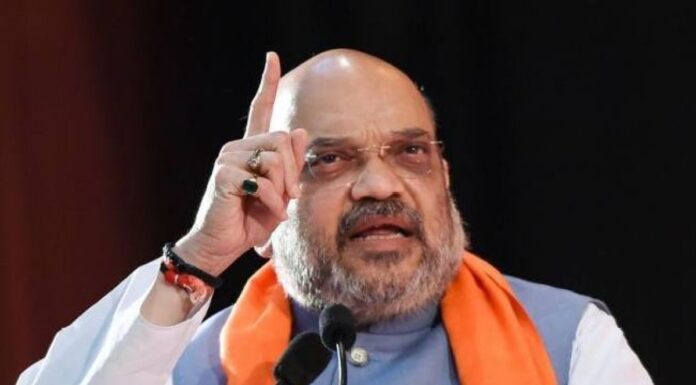JHALRAPATAN CITY–The City of Bells-
निर्देशांक: .4°.6′N 76°.9′E / 24.6, 76..5
झालावाड- –राजस्थान राज्य के दक्षिण-पूर्व में स्थित झालावाड़ जिला का मुख्यालय है।
यह झालावाड के हाडौती क्षेत्र का हिस्सा है । झालावाड के अलावा कोटा, बारां एवं बूंदी हाडौती क्षेत्र में आते हैं । राजस्थान के झालावाड़ ने पर्यटन के लिहाज से अपनी एक अलग पहचान बनाई है। राजस्थान की कला और संस्कृति को संजोए यह शहर अपने खूबसूरत सरोवरों, किला और मंदिरों के लिए जाना जाता है। झालावाड़ की नदियां और सरोवर इस क्षेत्र की दृश्यावली को भव्यता प्रदान करते हैं। यहां अनेक ऐतिहासिक और धार्मिक स्थल भी हैं, जो पर्यटकों को अपनी ओर खींचने में कामयाब होते हैं। झालावाड़ मालवा के पठार के एक छोर पर बसा जनपद है। इस जनपद के अंदर झालावाड़ और झालरापाटन नामक दो पर्यटन स्थल है।
| झालावाड़ | |
| समय मंडल: आईएसटी (यूटीसी+५:३०) | |
| देश | |
| राज्य | राजस्थान |
| जिला | झालावाड़ |
| जनसंख्या | ४८,०४९ (2001 के अनुसार ) |
| क्षेत्रफल • ऊंचाई (AMSL) |
• ३१२ मीटर (१,०२४ फी.ft) |
इन दोनों शहरों की स्थापना 18वीं शताब्दी के अन्त में झाला राजपूतों द्वारा की गई थी। इसलिए इन्हें ट्विन सिटी भी कहा जाता है। इन दोनों शहरों के बीच 6 किमी की दूरी है। यह दोनों शहर झाला वंश के राजाओं की समृद्ध रियासत का हिस्सा था।
प्रमुख आकर्षण—-
३.१ गढ़ महल
३.२ कृष्ण सागर
३.३ गागरन फोर्ट
३.४ सूर्य मंदिर
३.५ शान्तिनाथ मंदिर
३.६ गोमती सागर
३.७ नौलखा किला
३.८ बौद्ध और जैन मंदिरझालावाड़—
रजवाड़ा—-
रजवाड़ा: झालावाड़क्षेत्र हाड़ौतीध्वज, १९वीं शती स्वतंत्रता: कोटाराज्य उद्गम: 1838-1949
रजवाड़ा: झालावाड़क्षेत्र हाड़ौतीध्वज, १९वीं शती स्वतंत्रता: कोटाराज्य उद्गम: 1838-1949
राजवंश— झाला—राजधानी –झालावाड़—राजनीति——
झालावाड लोकसभा सीट से दुष्यंत सिंह जिले का प्रतिनिधित्व संसद में करते हैं ।
झालावाड लोकसभा सीट से दुष्यंत सिंह जिले का प्रतिनिधित्व संसद में करते हैं ।
जिले में पाँच विधानसभा क्षेत्र हैं–
मनोहरथाना,असनावर,पिडावा,डग,झालरापाटन,
—–झालरापाटन सीट से वसुन्धरा राजे सिंधिया क्षेत्र का प्रतिनिधित्व करती हैं ।
प्रमुख आकर्षण—-
गढ़ महल—गढमहल झाला वंश के रा-जाओं का भव्य महल था। शहर के मध्य स्थित इस महल के तीन कलात्मक द्वार हैं। महल का अग्रभाग चार मंजिला है, जिसमें मेहराबों, झरोखों और गुम्बदों का आनुपातिक विन्यास देखने लायक है।परिसर के नक्कारखाने के निकट स्थित पुरातात्विक संग्रहालय भी देखने योग्य है। महल का निर्माण 1838 ई. में राजा राणा मदन सिंह ने शुरू करवाया था जिसे बाद में राजा पृथ्वीसिंह ने पूरा करवाया। 1921 में राजा भवानी सिंह ने महल के पिछले भाग में एक नाट्यशाला का निर्माण कराया। इसके निर्माण में यूरोपियन ओपेरा शैली का खास ध्यान रखा गया है।
कृष्ण सागर—–शहर से करीब 6 किमी. दूर कृष्ण सागर नामक विशाल सरोवर है। यह सरोवर एकांतप्रिय लोगों को बहुत पसंद आता है। सरोवर के किनारे पर लकड़ियों से निर्मित एक इमारत है। इस इमारत को रैन बसेरा कहा जाता है। यह इमारत महाराजा राजेन्द्र सिंह ने ग्रीष्मकालीन आवास के लिए बनवाई थी। पक्षियों में रूचि रखने वालों को यह स्थान बहुत भाता है।
गागरन फोर्ट—–काली सिंध नदी और आहु नदी के संगम पर स्थित गागरन फोर्ट झालावाड़ की एक ऐतिहासिक धरोहर है। यह शहर से उत्तर में 13 किमी. की दूरी पर स्थित है। किले के प्रवेश द्वार के निकट ही सूफी संत ख्वाजा हमीनुद्दीन चिश्ती की दरगाह है। यहां हर वर्ष तीन दिवसीय उर्स मेला भी लगता है।
सूर्य मंदिर—-झालावाड़ का दूसरा जुड़वा शहर झालरापाटन को सिटी ऑफ वेल्स यानी घाटियों का शहर भी कहा जाता है। शहर में मध्य स्थित सूर्य मंदिर झालरापाटन का प्रमुख दर्शनीय स्थल है। वास्तुकला की दृष्टि से भी यह मंदिर अहम है। इसका निर्माण दसवीं शताब्दी में मालवा के परमार वंशीय राजाओं ने करवाया था। मंदिर के गर्भगृह में भगवान विष्णु की प्रतिमा विराजमान है। इसे पद्मनाभ मंदिर भी कहा जाता है।
शान्तिनाथ मंदिर—–यह मंदिर सूर्य मंदिर से कुछ दूरी पर स्थित है। ग्यारहवीं शताब्दी में निर्मित इस जैन मंदिर के गर्भगृह में भगवान शांतिथ की सौम्य प्रतिमा विराजमान है। यह प्रतिमा 11 फुट ऊंची है और काले पत्थर से बनी है। मुख्य मंदिर के बाहर विशालकाय दो हाथियों की मूर्तियां इस प्रकार स्थित हैं, मानो प्रहरी के रूप में खड़ी हों।
गोमती सागर—-झालरापाटन का यह विशाल सरोवर गोमती सागर के नाम से जाना जाता है। इसके तट पर बना द्वारिकाधीश मंदिर एक प्रमुख दर्शनीय स्थान है। झाला राजपूतों के कुल देवता द्वारिकाधीश को समर्पित यह मंदिर राजा जालिम सिंह द्वारा बनवाया गया था। शहर के पूर्व में चन्द्रभागा नदी है। जहां चन्द्रावती नगरी थी। उस काल के कुछ मंदिर आज भी यहां स्थित हैं, जिनका निर्माण आठवीं शताब्दी में मालवा नरेश ने करवाया था। इनमें शिव मंदिर प्रमुख हैं। यह मंदिर नदी के घाट पर स्थित है।
नौलखा किला—-शहर के एक छोर पर ऊंची पहाड़ी पर नौलखा किला एक अन्य पर्यटन स्थल है। इसका निर्माण राजा पृथ्वीसिंह द्वारा 1860 में शुरू करवाया गया था। इसके निर्माण में खर्च होने वाली राशि के आधार पर इसे नौलखा किला कहा जाता है। यहां से शहर का विहंगम नजारा काफी आकर्षक लगता है।
बौद्ध और जैन मंदिर—-झालावाड़ और झालरापाटन शहरों के बाहर जैन धर्म और बौद्ध धर्म से जुड़े मंदिर भी पर्यटकों को खूब लुभाते हैं। इसमें चांदखेड़ी का दिगंबर जैन मंदिर और कोलवी स्थित बौद्ध धर्म के दीनयान मत की गुफाएं काफी प्रसिद्ध हैं। झालावाड़ शहर से 23 किमी की दूरी पर भीमसागर बांध स्थित है तथा 65 किमी की दूरी पर भीमगढ किला है। यह स्थल भी पर्यटन के लिहाज से घूमा जा सकता है।
आवागमन—–
झालावाड राष्ट्रीय राजमार्ग १२ (जयपुर-जबलपुर) पर स्थित है । निकटतम बडा शहर कोटा है जो ८५ किलोमीटर दूर है । अभी जिला मुख्यालय पर रेलवे लाइन नही है लेकिन कार्य प्रगति पर है और 2008 तक रेलवे स्टेशन बन जाने की उम्मीद है।झालावाड़ का निकटतम एयरपोर्ट कोटा विमानक्षेत्र है। यह शहर से 87 किमी. दूर स्थित है। नजदीकी रेलवे स्टेशन भी कोटा ही है। कोटा से झालावाड़ जाने के लिए बस या टैक्सी की सेवा ली जा सकती है। इसके अलावा जयपुर, बूंदी, अजमेर, कोटा, दिल्ली, इंदौर आदि शहरों से बस सेवाएं उपलब्ध हैं।=====================================================================
Jhalrapatan —Famous Bell Temples—
Jhalrapatan is located 6 Km from Jhalawar is known as the ‘City of Bells’ – derived from its numerous temples and their bells. A unique feature about this town is that the entire township resides within the confines of a wall which was built to protect the trade caravans as it was one of the junction of the trade route.
One can visit some beautiful temples : Surya tempes, Chandrabhaga temples & Shantinath Jain temple.
¤ Main Attractions —-
Surya Temple- Replica of Konark Temple in Orissa The walled Jhalrapatan is a Jhalawar suburb, and its name is derived from the towns numerous temples and their bells. It is said that Jhalrapatan originally had 108 temples built over a few centuries, but today the finest amongst them is the 11th century Surya temple. Similar to the Sun temple in Konarak in Orissa, the Surya temple in Jhalrapatan is crowned with a finely carved shikhara (spire). This high steeple is an amalgamation of miniature towers which seem to stick to the main tower, making it a unique one by itself. The shikhara is built in layers and the size of the pillars decreases as height increases, following a seven storey pillar format. The base of the shikhara is made up of larger pillars close to each other around the main foundation, similar to the Qutub Minar in Delhi.
The Temple Construction The temple is actually built in two sections; one serving as the entrance with pillars supporting a second storey followed by the main sanctum. The roof of the entrance has large and small chatris (pavilions) surrounding the main pagoda in the roof’s centre. Till the middle of the 19th century the temple housed a dazzling gold statue of the Sun god Surya but this was carried off by plunderers during the Uprising of 1857. The columns and arches supporting the roof at the entrance are, as in most ancient Indian temples, richly carved with images of gods, goddesses and other Hindu motifs. Also worth seeing are old tiles engraved with figures of the gods Vishnu and Krishna on the outside walls of the temple. However, the Surya temple is no longer used as a temple and has now been adopted as a meeting place for locals who have little better to do. Don’t be alarmed to see people sleeping on the temples’ stone platforms and just hanging around doing nothing, with worship being the last thing on their minds
Jain temple Near the Surya temple is a 11th century Jain temple with painted murals depicting punishments showered upon wrongdoers.
Chandrabhaga TemplesRajputs trace their ancestory to the Sun and the Moon, and if there is a Surya (Sun) temple there has to be one dedicated to the Moon. The Chandravati or Chandrabhaga temples are just that and are located on the banks of the Chandrabhaga stream on the outskirts of Jhalawar.
Interesting Legends About The Foundation of the TempleBy whom exactly were the foundations of these temples laid is a little mysterious, but there are a few interesting legends connected with them. According to one, there was a certain Raja Hoon who founded the Chandravati temples. Another legend associates it with the daughter of Chandrasen, the ruler of Malwa (northwest Madhya Pradesh). The story goes that Chandrasen’s queen gave birth to a son at this very spot while they were on a pilgrimage. Pleased with this, Chandrasen commissioned the building of these temples.
The third myth is more humble and attributes the origin of the temples not to a king but a mere woodcutter. Jasso was a poor woodcutter of the ancient Orr tribe. On his way back home from the forest, Jasso dropped his axe on a stone. Now this stone had magical features and transformed Jasso’s axe into one which could turn iron into gold. With this amazing ability he soon raised enough gold to build these temples, and lake nearby is till called Jasso ka talaab (Jasso’s lake) in his memory. However, there is a catch. From historical sources it seems that Jasso was not a humble woodcutter but the grandson of Udaydit, the ruler of Malwa. Presumably all this magic business occurred during one of the prince’s forays into the forest for whatever reasons.
But there is yet another legend which goes back even further in time, way back to the Mahabharata (circa 4th century BC). Out of the five exiled Pandava brothers, Bhima was the strongest, and at some point the brothers reached this forest. A spirit decided to disturb them and took the form of a boar. Bhima didn’t see much humour in a wild boar grunting near him and he shot it down with an arrow. Anything can happen in mythology, and it happened this time too – where the boar fell sprang forth a stream which came to be known as Chandrabhaga.
Temple IdolsThe temples were actually built in the 6th century AD, and lie scattered along the banks of the Chandrabhaga stream. Most of these 108 temples are in ruins, but there are some that are in remarkable shape considering their age. A flight of steps lead down to the water, to ancient ghats which must have been in use centuries ago. Statues of Hindu gods and goddesses can be found in abundanace here, piled on top of each other and just lying around all over the place. More common are those of Ganesha, Narayan, Shiva and Parvati, although only their remnants remain. Some idols are a little fortunate, placed upon a pedestal and gazing into the distance.
Imposing Temple Carvings Temple builders in ancient India had a glorious habit of of going overboard when it came to carving. From pillars to ceilings, stairways and arches, everything came under the engraver’s chisel. Things are pretty much the same in Chandrabhaga. At the entrance to the Chandramuleshwar temple stand two stone pillars, carved from base to top. The lower portion of the columns depict goddesses and their escorts in a finery rarely seen in Rajasthan, while the steps leading up and into the temple have also been subjected to a great deal of chisel work. Near the Chandramuleshwar temple is the rectangular Sitalasvara temple crowned with a bulbous dome. However, only the lower parts of the temple remains as the upper portions have long fallen down. The date given to the construction is 689AD, although this is refutable. What is certain is that these temples were built during the 7th century, but the exact date is still officially unknown. Chandravati was perhaps a centre of music and dance when it was built, for its structure and general layout suggests that such activities did occur here.
Temple Inscriptions An ancient inscription still exists in one of the temples, dated 692AD and ascribing it to Raja Durgangul. The writing on the wall mentions the Pandava brothers and their tryst with the boar `demon’ Varaha (Varaha is also worshipped as a god). It states that when Varaha fell, from his wound sprang out a figure which was the first of the Khatri clan.
Near the Orr dam there are a few cenotaphs of Jain monks. One is dated 1010AD and is dedicated to Srimunt Deva, a disciple of Acharya Sriman Deva whose bust still exists, reading an open stone book. Two other translated inscriptions on cenotaphs of Jain monks have dates of 1124 and 1233AD.
Jhalrapatan, dubbed as the ‘City of bells’, is a small town located 6 km from Jhalawar, Rajasthan. The entire township exists within a wall, built to safeguard the trade caravans as Patan was the junction of caravan routes. Situated on the banks of the holy river Chandrabhaga, the town was founded by Parmara Chandra Sen, grandson of Maharaja Vikramaditya.Major attraction here is a magnificent 100 ft high Surya Temple (Padam Nath Temple), which dates back to the 10th century. The annual Chandrabhaga Fair, held here in the month of Kartika (October-November), is a major draw. Other points of attractions include the 11th century Shantinath Jain temple and Shri Dwarkadheesh temple (built by Jhala Zalim Singh) are among the other important temples of the city.
Nearest airport is at Jaipur. Ramganj Mandi is the nearest railway station (25 km). Jhalawar has regular bus services to Jaipur (335 km), Ajmer (292 km), Kota (87 km), Bundi (123 km), Delhi, Bhopal (265 km), Indore (235 km) and Udaipur (445 km).









